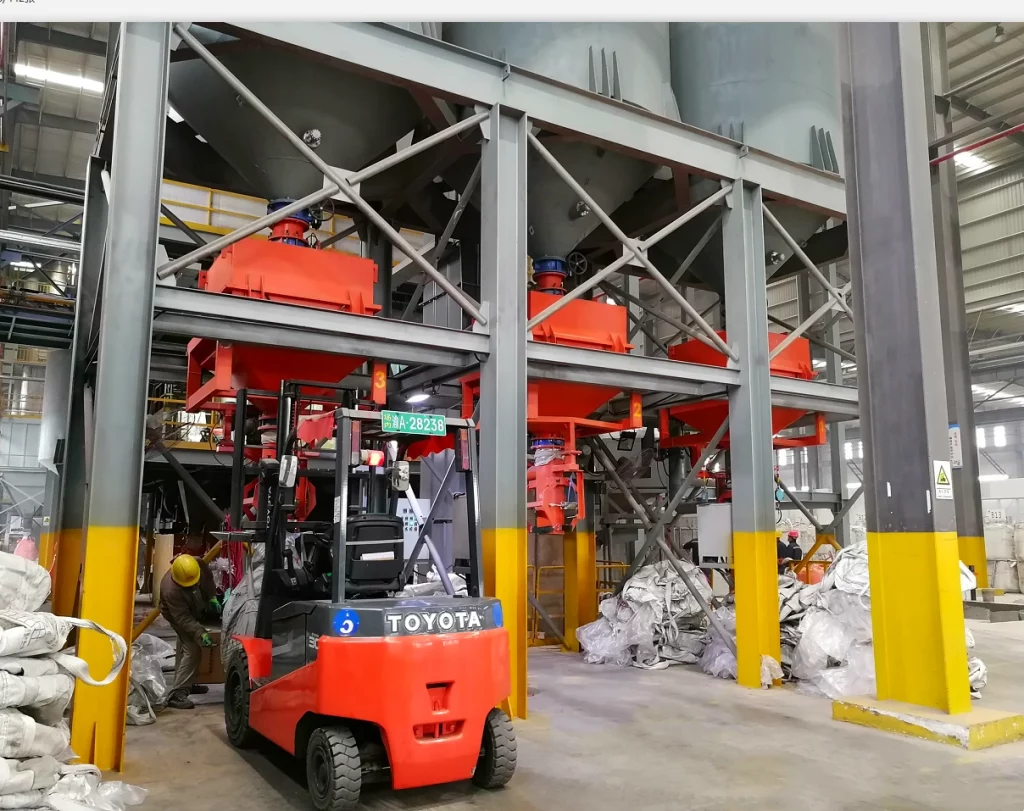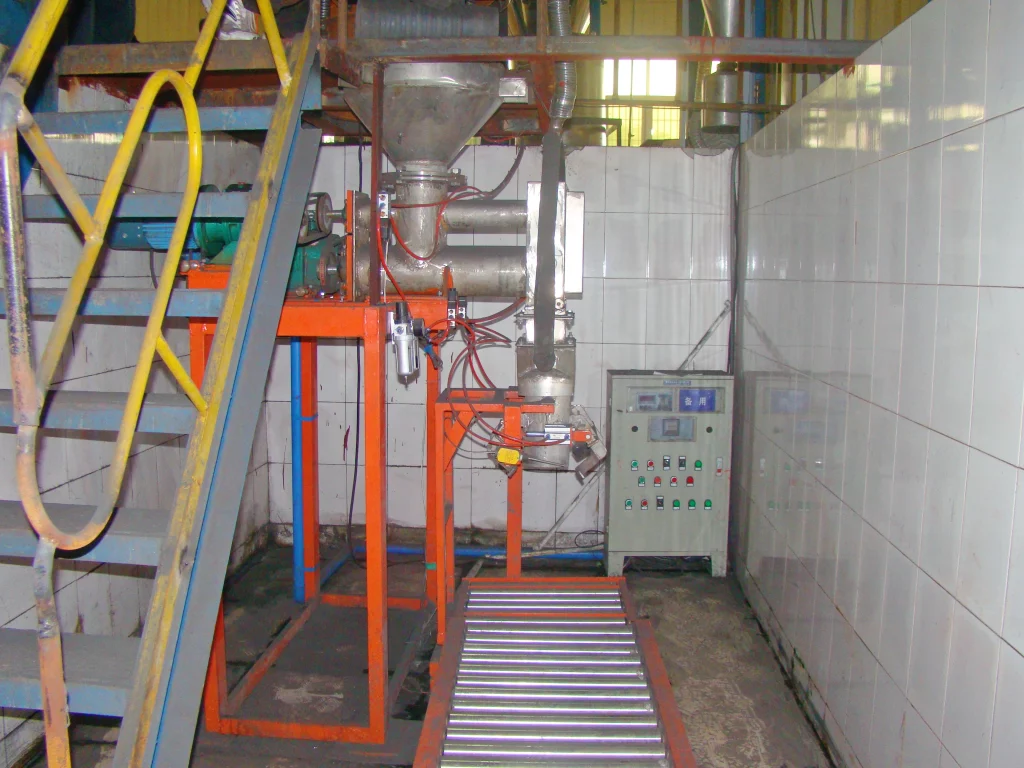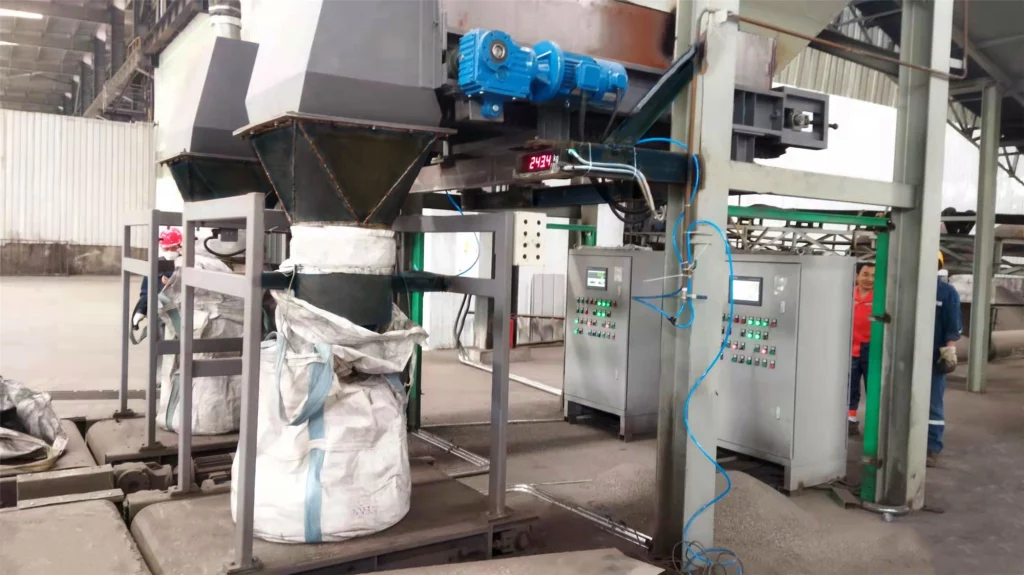The Essential Guide to Ton Bag Packing Machine Maintenance
Ton bag packing machines, also known as bulk bag packing machines, are useful tools in a variety of industries as one type of the popular packaging scale. They handle and package large amounts of material efficiently, saving time and effort. Ton bag packing machines, like any other complex machinery, can fail, disrupting production and compromising product quality. This article will teach you how to recognize signs that your machine needs to be repaired, how to identify common faults and their potential causes, and how to implement necessary maintenance practices to keep your ton bag packing machine running smoothly.
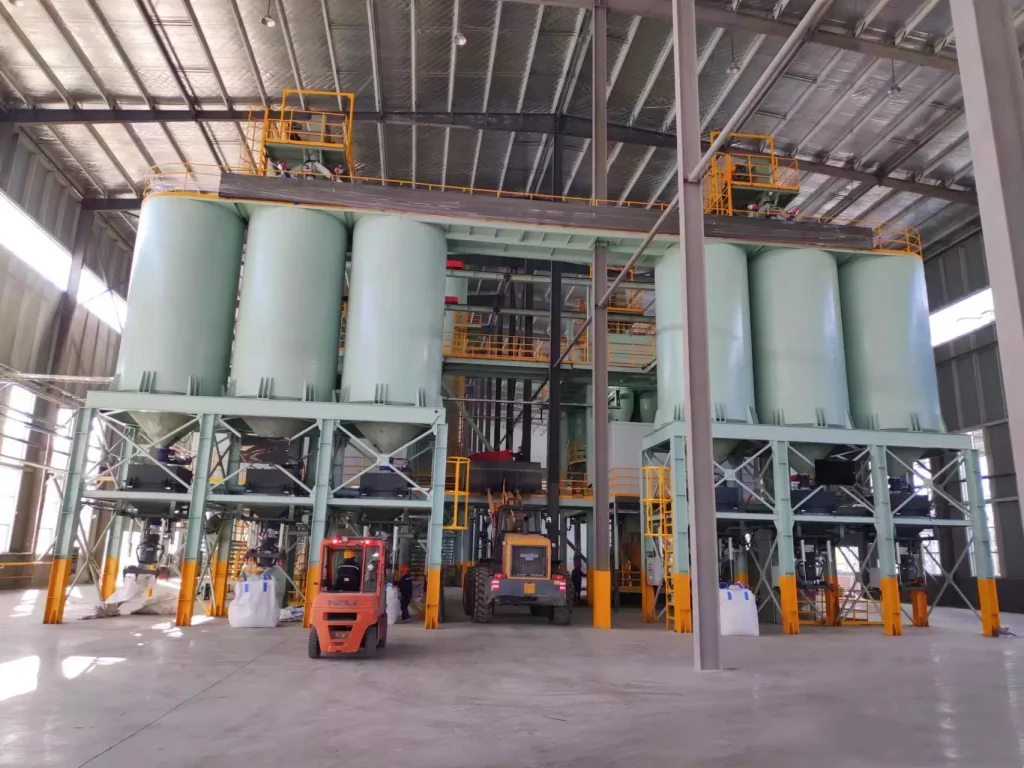
How to Determine if a Ton Bag Packing Machine Needs Repair
1. Observing the machine’s running status.
Pay attention to any unusual noises, examples include banging, rubbing, and squealing. These noises may indicate a problem with the machine’s bearings, gears, or other components. Check for any signs of overheating, such as smoke or burning odors. This could indicate an issue with the motor or other electrical components. Look for any leaks of fluids, examples include oil and hydraulic fluid. This could point to a problem with the seals or hoses.
2. Checking machine performance.
Monitor the packing speed and accuracy of the machine. If the machine packs slower than usual or the bags are not filled evenly, there may be a problem with the filling mechanism or the conveyor system. Check the quality of the seals on the bags. If the seals aren’t airtight, there could be a problem with the sealing mechanism. Inspect the bags for any damage, such as tears or holes. This could point to a problem with the handling system or the packaging materials.
3. Regular maintenance and inspection.
Follow the manufacturer’s recommended maintenance schedule. This will help to keep problems from arising in the first place. Regularly inspect the machine for signs of wear and damage. This includes inspecting the belts, chains, sprockets, bearings, and other parts. Lubricate all moving parts according to the manufacturer’s instructions. Keep the machine clean and free of debris. This will help prevent dirt and dust from entering the machine and causing problems.
4. Recording and analyzing data.
Keep track of the machine’s performance data, such as packing speed, accuracy, and downtime. Analyze the data to identify any trends or patterns. This could assist you in identifying potential issues before they cause significant disruptions. Use the data to make sound decisions about when and how to perform maintenance.
5. Professional diagnosis.
If you are unable to determine the cause of a problem yourself, or if the problem is complex, contact the equipment manufacturer or a professional repair technician. They will be able to diagnose the problem and recommend the best course of action.
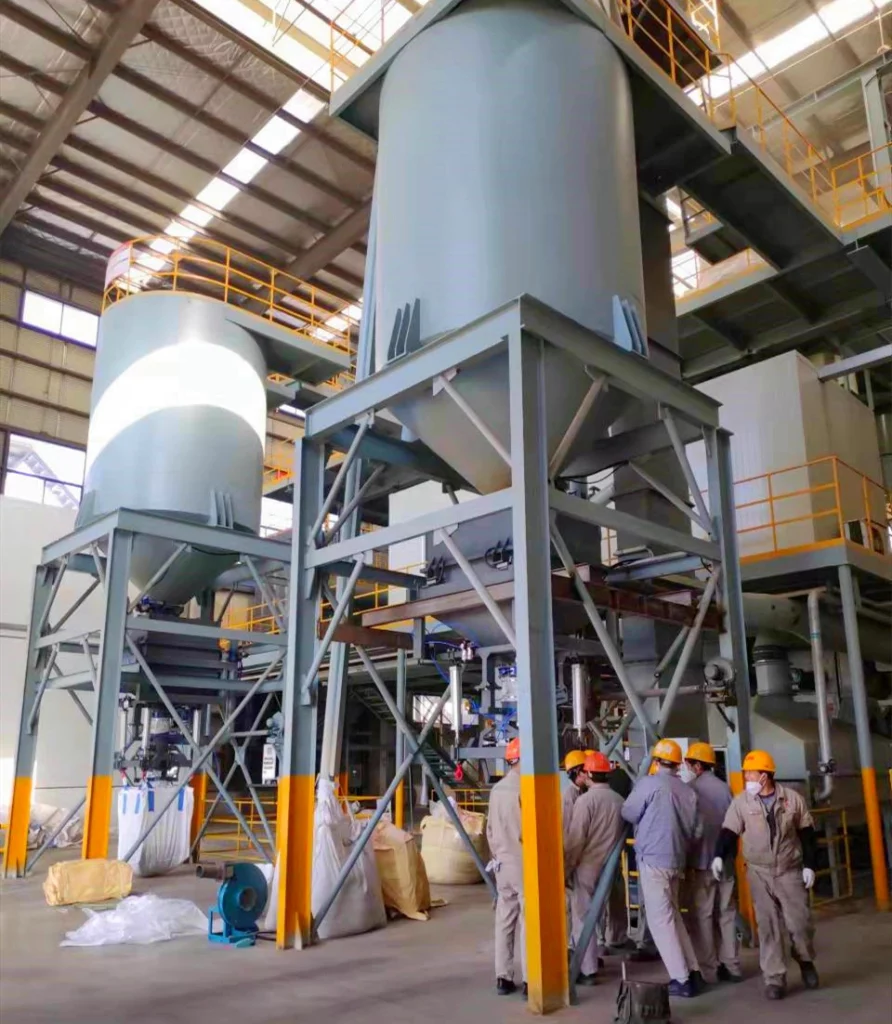
Common Faults of Ton Bag Packing Machines and Their Possible Causes
| Fault | Possible Cause | Solution |
| Electrical faults | Power supply problems, motor faults, and wiring faults. | Check the power supply voltage and connections, inspect the motor for damage or faulty wiring, and repair or replace any faulty wiring. |
| Mechanical faults | Damaged transmission parts, loose belts, worn bearings. | Inspect transmission parts for damage, tighten loose belts, and replace worn bearings. |
| Pneumatic faults | Leaky cylinders and faulty pneumatic valves. | Check for leaks in cylinders and repair or replace any faulty valves. |
| Sensor faults | Sensor failure, insufficient sensor sensitivity. | Calibrate or replace faulty sensors, and adjust the sensor sensitivity settings. |
| Control system faults | PLC and touchscreen faults. | Check for errors in the PLC, troubleshoot touchscreen problems, and repair or replace defective components. |
| Inaccurate packaging | Faulty weighing systems, such as damaged weighing sensors or the weighing instrument | Replace the damaged weighing sensor or weighing instrument. |
| Bags not sealing properly | Issues with the sealing device’s heating element or temperature sensor. | Check and replace any damaged components in the sealing device. |
| Damaged bags | Issues with the conveying system or forklift handling. | Inspect and repair or replace any damaged components in the conveying system or forklift. |
| Machine won’t start | A faulty power supply or control system. | Check for faults in the power supply and control system, and repair or replace any damaged components. |
| Material leaks from the machine | Faulty sealing or protective covers. | Inspect sealing and protective covers for damage, then repair or replace any damaged components. |
Prevention and Maintenance
Regular inspection and maintenance are essential for preventing these faults and ensuring the Ton Bag packing machine’s smooth operation and production efficiency. Here are some important preventative measures:
- Inspect the machine on a regular basis for signs of wear and damage. This involves inspecting belts, chains, sprockets, bearings, and other components.
- Lubricate all moving parts per the manufacturer’s instructions. This will reduce friction and wear, extending the life of the machine’s components.
- Maintain the machine clean and clear of debris. This will prevent dirt and dust from entering the machine and causing problems.
- Adhere to the manufacturer’s recommended maintenance schedule. This will help to ensure that the machine is well-maintained and that any potential problems are identified and addressed early on.
- Promptly respond to any signs of trouble. If you notice any unusual noises, vibrations, or other issues with the machine, do not disregard them. Get the machine inspected by a qualified technician as soon as possible.
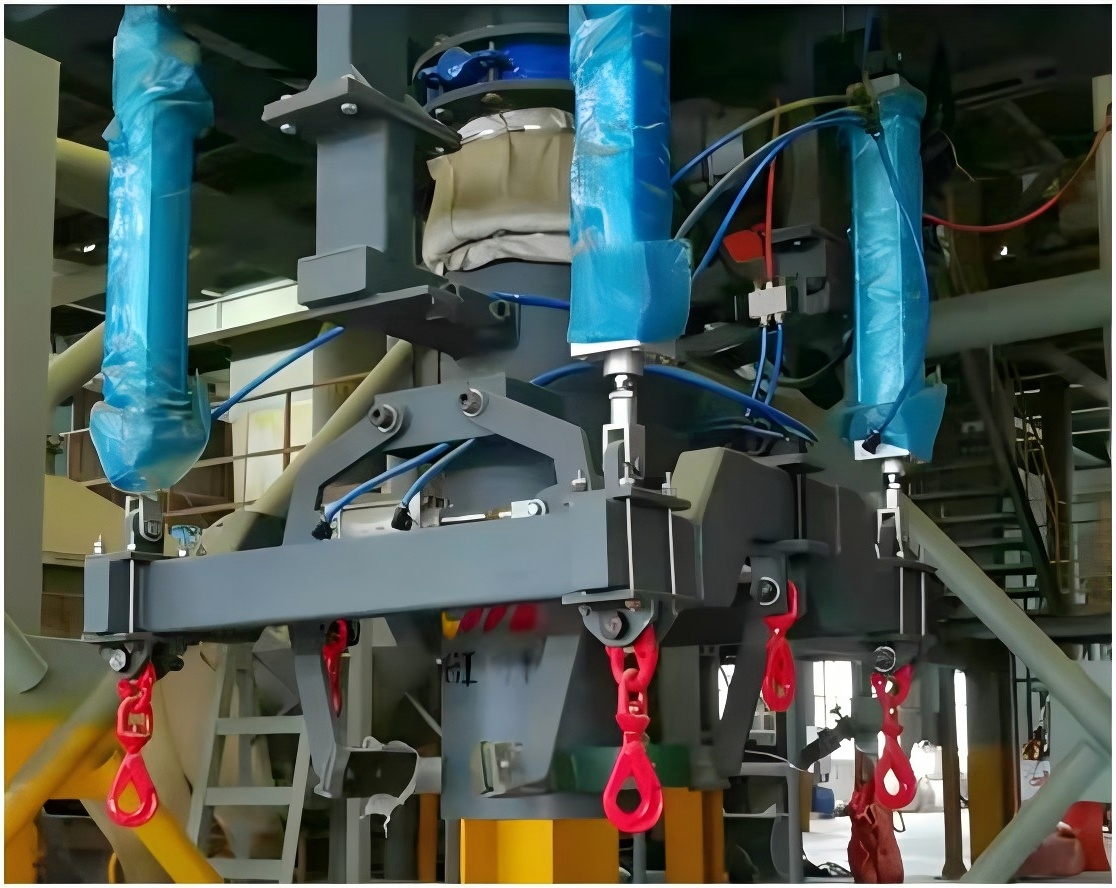
Ton Bag Packing Machine Maintenance and Care
| Maintenance Item | Description | Frequency |
| Cleaning | Clean the machine’s components and surfaces to remove dust, debris, and foreign materials. Pay special attention to the packing area, conveyor system, and sealing areas. | Regularly |
| Lubrication | Lubricate all moving parts in accordance with the manufacturer’s instructions and schedule to ensure that bearings and transmission components run smoothly. | Regularly |
| Inspection and Tightening | Inspect all machine components and fasteners to ensure their security and to prevent loosening-related malfunctions. | Regularly |
| Electrical System Inspection | Inspect electrical components and wiring on a regular basis to ensure the electrical system’s stability and safety, as well as to eliminate potential wiring faults and poor contact issues. | Regularly |
| Fault Recording and Handling | Any faults or abnormalities discovered should be promptly documented and addressed. Establish solutions and countermeasures for common faults to ensure quick repair. | As needed |
| Replacement of Wearing Parts | To ensure proper operation, replace wearing parts such as seals and conveyor belts on a regular basis, according to the machine’s usage and the manufacturer‘s recommendations. | Regularly |
| Calibration | Calibrate and adjust any components that require calibration, such as the weighing system, to ensure weighing accuracy. | Regularly |
| Operator Training | To increase maintenance awareness, train machine operators on proper operation methods and techniques. | As needed |
| Maintenance Plan | Create a regular maintenance schedule that includes cleaning, lubrication, inspection, and repair tasks. To keep the equipment stable and reliable, perform maintenance and care as planned. | Regularly |
By following these steps, you can help your ton bag packing machine run smoothly and last longer, as well as improve production efficiency and product quality. Regular maintenance and care are essential for reducing downtime, ensuring equipment stability, and ensuring continuous operation.
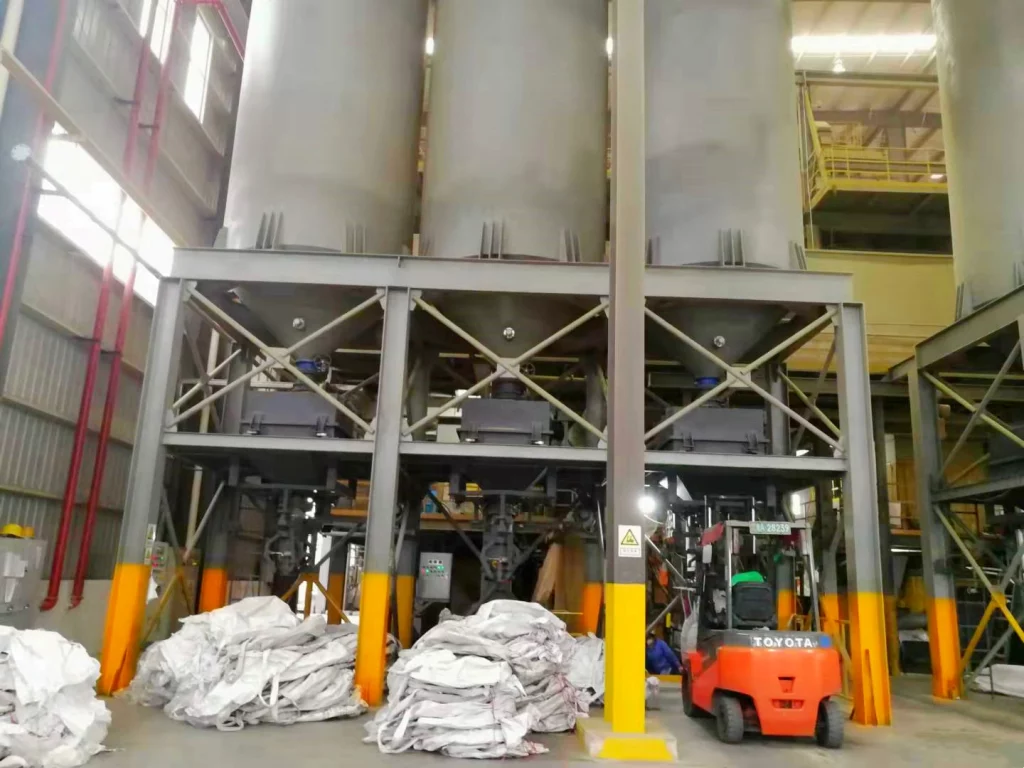
Conclusion
Following the advice in this article will help you become more proactive in maintaining your ton bag packing machine. Regular inspections, proper maintenance procedures, and prompt resolution of minor issues can significantly reduce downtime, extend machine life, and ensure optimal production efficiency. Remember, a well-maintained ton bag packing machine is a dependable asset that keeps your business running smoothly and efficiently. Bincen will continue to give you more guides about other packaging scales.

